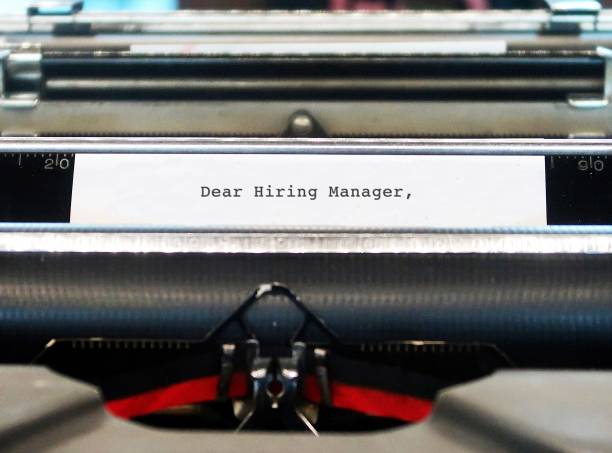A cover letter is one of the most critical components of a job application. It’s your chance to make a memorable first impression and showcase why you’re the ideal candidate for a role. Unlike a CV, which lists your qualifications and experience, a cover letter allows you to speak directly to the hiring manager, demonstrating your enthusiasm and alignment with the position. This guide will walk you through everything you need to know about crafting the perfect cover letter to stand out in the job market.
What is the purpose of a cover letter?
A cover letter serves as a personal introduction to recruiters. It goes beyond the facts on your CV, allowing you to explain your motivations, skills, and how you align with the company’s goals. Think of it as your opportunity to:
- Highlight your most relevant achievements.
- Demonstrate how your experience matches the job description.
- Show your enthusiasm and understanding of the company’s mission.
Employers view cover letters as a window into a candidate’s communication skills and enthusiasm for the role. A compelling, well-crafted cover letter can be the key to securing an interview and standing out from the competition.
How to write a cover letter (A step-by-step guide)
Writing a cover letter may seem daunting, but breaking it into smaller steps can simplify the process. Here’s a guide to crafting each section of your cover letter:
Greeting and opening paragraph
Start by addressing the hiring manager by name, if possible. Personalisation shows effort and can leave a lasting impression. If the name isn’t provided, use a professional salutation like “Dear Hiring Manager.”
In the opening paragraph, introduce yourself and mention the position you’re applying for. Use this space to grab attention with a strong statement about your enthusiasm for the role or a notable achievement.
Body paragraphs
The body of your cover letter is your opportunity to showcase your strengths and convince the employer you’re the right fit. Here’s what to include:
- Highlight your skills and experience: Focus on the qualifications that make you a strong candidate for the role. Learn how to present your expertise effectively by identifying the most in-demand skills for today’s job market. For tips on showcasing your expertise effectively, explore our top 10 CV skills for 2024 job seekers.
- Tailor to the job description: Demonstrate how your background aligns with the company’s specific needs by referencing relevant accomplishments from your career.
- Show why you’re a fit for the company: Express your enthusiasm for the company’s mission or culture. If you’re transitioning to a new industry, consider strategies for leveraging your transferable skills to bridge the gap.
These elements will make your cover letter personal, impactful, and aligned with the role you’re pursuing.
Closing paragraph and sign-off
End your cover letter with a call to action. Express your interest in discussing the role further and thank the hiring manager for their time. Use a professional closing like “Yours sincerely” or “Best regards” followed by your name.
If you’re looking to build confidence for the next steps in the hiring process, consider exploring strategies such as the STAR technique to excel in competency-based interviews and stand out to potential employers.
For additional tips on preparing for interviews, check out our guide on how to ace competency-based interviews.
Common mistakes to avoid in your cover letter
A well-crafted cover letter can set you apart, but even small missteps can hurt your chances. Here are some common mistakes to avoid to ensure your letter makes the right impression:
1. Using generic content
Avoid sending a one-size-fits-all cover letter. Take the time to tailor your letter to each job application. Reference the job description and align your skills and experiences with the specific needs of the role.
2. Overlooking spelling and grammar
Errors in spelling or grammar can come across as unprofessional and careless. Always proofread your cover letter thoroughly or use tools like spell check to ensure it’s polished.
3. Repeating your CV verbatim
Your cover letter should complement, not duplicate, your CV. Instead of listing your qualifications again, use the letter to expand on key achievements and demonstrate how they align with the role.
4. Focusing solely on yourself
While it’s important to showcase your skills and enthusiasm, don’t make the letter all about you. Instead, focus on how your contributions can benefit the company and help achieve its goals.
By avoiding these common pitfalls, you can craft a cover letter that resonates with hiring managers and increases your chances of landing an interview.
Cover letter example:
Use this template as a starting point for your own cover letter:
[Your Name]
[Your Address]
[City, Postcode]
[Email Address] | [Phone Number]
[Date]
[Hiring Manager’s Name]
[Company Name]
[Company Address]
[City, Postcode]
Dear [Hiring Manager’s Name],
I am writing to express my interest in the [Job Title] position at [Company Name]. [Introduce yourself and state why you’re excited about the role and company.]
[In the second paragraph, explain your relevant skills, experiences, and achievements. Use specific examples that align with the job description.]
[In the final paragraph, express your enthusiasm for the role and thank the hiring manager for considering your application. Include a call to action, such as a request for an interview.]
Yours sincerely,
[Your Name]
Frequently asked questions: Cover letters
How long should a cover letter be?
A cover letter should be no longer than one page. Aim for around 250-400 words, ensuring it’s concise but impactful.
Is a cover letter the same as a CV?
No. A CV lists your qualifications and work history, while a cover letter explains why you’re the right fit for a specific role.
How to write a cover letter in Ireland?
When writing a cover letter for the Irish job market, focus on clear communication, professional tone, and personalisation. Research the company’s values and culture to make your letter stand out.
Craft your perfect cover letter today with Recruit Ireland
Now that you know what makes a great cover letter, it’s time to put your skills into action. Use the tips and examples in this guide to craft a compelling letter that showcases your unique qualities.
Explore more job opportunities and career advice on Recruit Ireland’s Advice Centre or visit Recruit Ireland’s Jobs Page to take the next step in your professional journey.










